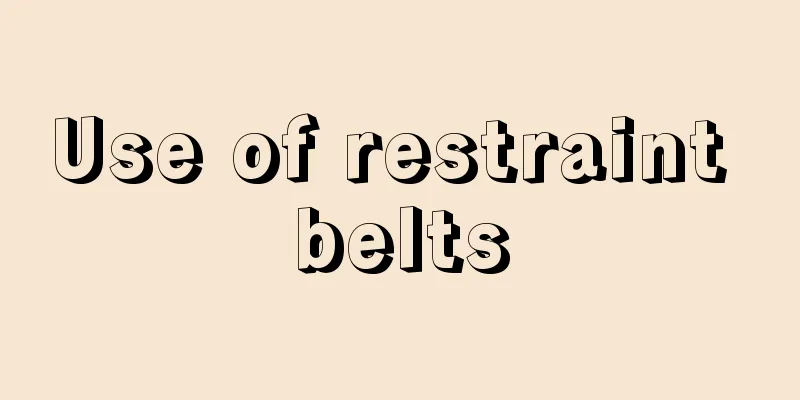Use of restraint belts

|
Restraint belts are used relatively frequently in medicine. Restraint belts are mainly used to ensure the safety and comfort of patients. Before using restraint belts on patients, the patient's family members should be consulted. When using restraint belts on patients, padding should be placed under the restraint belts. The tightness should be appropriate when fixing them. At certain intervals, the condition of the restrained part of the patient should be observed to see if the patient has any abnormalities. How to use the restraint belt 1. First, assess the patient's condition, age, state of consciousness, vital signs, and limb mobility, as well as any skin friction damage and blood circulation disorders. 2. Explain to the patient or family members the purpose, time of use, method and precautions of using the restraint belt, and try to obtain the cooperation of the patient or family members. 3. Select the restraint site according to the patient's condition. Commonly used restraint sites are wrists and ankle joints. 4. Use the prepared restraint belt to go around the middle and fold it in half to form a double knot. If necessary, the knot can be wrapped with the patient's sleeve or cotton pad. Slightly tighten the knot at the restraint part with appropriate tightness, so that 1-2 fingers can be inserted to avoid affecting blood circulation. Tie a knot to prevent the hands and feet from falling out easily, and fix the restraint belt to the bed. 5. The restraint part is at the shoulder: it mainly restricts the patient from sitting up. At the knee: restrict the patient's lower extremity movement. About restraint belts Restraint belts can control the occurrence of dangerous behaviors of patients (such as suicide, self-harm, extreme excitement and impulse, and obvious aggressive behavior) and prevent patients from harming others or themselves. Prevent children, patients with high fever, delirium, coma, agitation and critically ill patients from falling out of bed, being hit, scratched, etc. due to weakness, unconsciousness or other reasons, ensure the safety of patients, and ensure the smooth progress of treatment and care. Notes on using restraint belts: (1) Sign the informed consent form. (2) Strictly follow the indications for use and avoid using it as much as possible. (3) Loosen the restraints regularly and pay attention to the skin condition at the restraint site. (4) Record the time of restraint and the time of release and the corresponding measures. (5) Assess the patient's limb strength at all times and avoid unnecessary restraint. Generally, restraint can be released if the strength is below level 3. |
>>: Precautions for using restraint belts
Recommend
Does myopia cause bulging eyes?
In daily life, myopia is a very rare eye disease,...
Which cold medicine is best? You also need to choose the right medicine to treat a cold
When you have a cold, you cannot take medicine at...
How is prostate cancer caused? Check out the 4 causes of prostate cancer
Some friends found that they always had an unexpl...
What are the specific descriptions of the symptoms of colon cancer?
Intestinal cancer is a common intestinal disease,...
Can pulmonary fibrosis be reversed?
When lung function becomes sick, it may mean that...
Can I get pregnant if I am positive for herpes simplex virus type 1
The public doesn't seem to know much about he...
How long does it take to thaw steak
Steak is a very delicious Western food. After it ...
What can cranial color Doppler ultrasonography reveal?
Some patients go to the hospital for examination ...
Experts talk about the symptoms of early-stage colorectal cancer
With the improvement of living standards, people&...
What is the cause of cough after radiotherapy for nasopharyngeal carcinoma and what is the treatment method?
After radiotherapy for nasopharyngeal carcinoma, ...
Always worried about bad things happening
Different people treat things differently and dea...
Why do we fart during sex
When men and women are in a normal relationship, ...
What are the wonderful uses of mint leaves
Mint is a perennial herb with good effects of ope...
What to use to wipe furniture to remove formaldehyde
Many people have always believed that formaldehyd...
c56 disc herniation
Nowadays, people’s life pressure is gradually inc...









